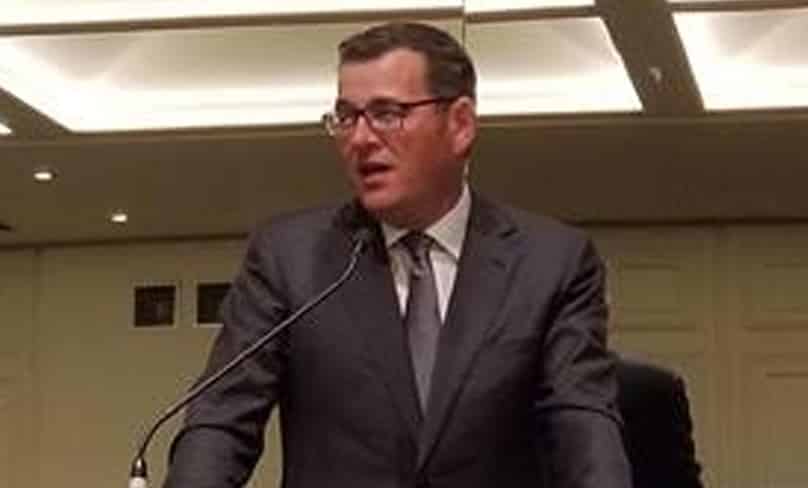
One in five Victorians will die without access to end of life palliative care in their state this year. For that horror, we can thank Premier Dan Andrews and the euthanasia lobby
On 19 June 2019, the day Victoria’s euthanasia and assisted suicide law came into effect, Victorian Premier Daniel Andrews spoke of the many safeguards and checks and balances in the law and described it as “on any measure, the most conservative model anywhere in the world.”
He also said:
“We think there may be a dozen or so in the first 12 months and we would expect that it will be between 100 and 150 that will be eligible and will make the choice to end their life within this very conservative model each year.”
“In its second year, 204 people did so, an increase of 55.7 per cent on the year before.”
The very first annual report of the Voluntary Assisted Dying Review Board, issued last week, confirmed that the only thing that was conservative about Victoria’s law was the prediction about how many people would kill themselves using its provisions.
In its first year of operation, 131 people ended their lives by euthanasia or assisted suicide.
In its second year, 204 people did so, an increase of 55.7 per cent on the year before.
In its third year, the one enduing 30 June 2022, 269 people died, which represents another increase of 31.9 per cent.

Assisted suicide has been legal in Oregon for 25 years, but even that state has not reached 269 deaths annually.
There is no sign to indicate that the number of deaths from euthanasia or assisted suicide in Victoria will remain steady or decrease.
Palliative Care Victoria has raised the alarm about the lack of funding for the sector, with an expected $91.2 million funding deficit in 2025.
“… the impact of the COVID-19 pandemic on charitable donations and the demand on these means the gap will not be closed.”
While the group usually turns to charitable organisations to make up this shortfall, the impact of the COVID-19 pandemic on charitable donations and the demand on these means the gap will not be closed.
It is hard to imagine what the lack of funding means in the abstract, so let’s paint a picture of how it affects an individual at the end of life.

Palliative Care Victoria has explained that without the requisite investment in palliative care, “more than 10,000 Victorians will die each year without having access to palliative care when they require it.”
In the last financial year, 46,334 Victorians died. 10,000 people dying each year without access to palliative care when they need it represents more than 1 in 5 of all deaths in Victoria dying without access to end-of-life care.
Given this, you could expect that those who lobby for the end-of-life choices would have something to say about the urgent need for palliative care funding, but we have heard nothing.
“… those who claim to back ‘dying with dignity’ really only care about euthanasia and assisted suicide.”
Like those who label themselves ‘pro-choice’ only caring about access to abortion, those who claim to back ‘dying with dignity’ really only care about euthanasia and assisted suicide.
Look at Victoria’s Voluntary Assisted Dying Review Board, which is tasked under the law to monitor matters relating to voluntary assisted dying and report on any recommendations for its improvement.

In the Board’s most recent report, it wrote:
“Palliative care services are available to all Victorians, with care available dependent on individual need… It is important to recognise that voluntary assisted dying is not an alternative to palliative care. This is underscored by the fact that 81 per cent of applicants applying for voluntary assisted dying have accessed or are being cared for by a palliative care service.”
The Board gives no qualitative information about the nature of the care it claims patients are receiving, other than noting the length of palliative care provided ranged from 0-120 months, with the median length of care being three months.
“… the release of this latest data has been accompanied by calls for the removal of certain safeguards in the legislation to expand the number of people eligible to die, and to provide fewer checks and balances for them to do so.”
Given that a person with six months to live is eligible for euthanasia, having the majority of patients who receive palliative care do so for less than three months, if at all, before they die, the Board’s assertion that palliative care services are available to all Victorians is suspect.
Additionally, the three-month median treatment confirms stories about availability from other states, with one NSW woman telling a recent parliamentary inquiry that her father was only referred to palliative care 24 hours before he died, and Queensland’s standard practice of only referring a person to palliative care when they had three months to live.
Despite all of this, the release of this latest data has been accompanied by calls for the removal of certain safeguards in the legislation to expand the number of people eligible to die, and to provide fewer checks and balances for them to do so.
After all, it’s much cheaper to kill them than to invest an additional $91.2 million each year to give them real end-of-life choice.
